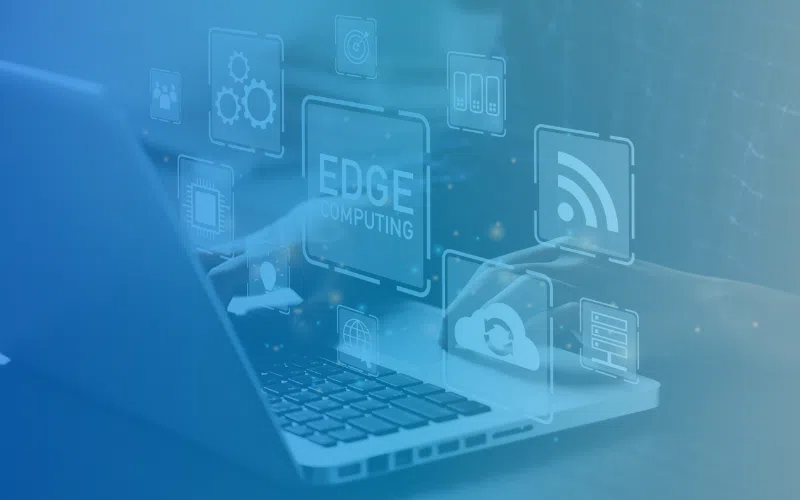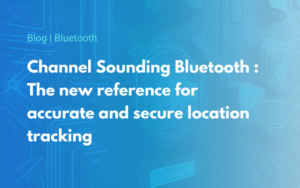
In the world of theInternet of Things (IoT), the volumes of data generated by connected sensors and equipment are exploding. For solution integrators, the key question is no longer just how to collect this data, but how to process it efficiently to meet industrial needs in real time, while limiting costs and network constraints. This is whereedge computing comes in.
What is edge computing?
Edge computing refers to an IT architecture in which data processing takes place as close as possible to the source, i.e. directly in the gateway, sensor or local device, rather than systematically transferring all data to a centralized server or the cloud.
Why is edge computing a major asset in industrial IoT?
1. Real-time responsiveness and decision-making
In industrial environments, certain alerts or actions need to be taken immediately. For example, overheating in a cold store cannot wait for a remote analysis in the cloud, which could take several seconds or minutes. Thanks to edge computing, the local gateway instantly detects when a threshold is exceeded and generates an immediate alert, without depending on the Internet connection.
2. Reduce network consumption and costs
Streaming millions of pieces of data to the cloud requires high bandwidth, which can be costly and unreliable, especially in remote industrial environments. Edge processing allows data to be filtered and pre-processed, sending only useful information, thus considerably reducing network load.
3. Robustness and autonomy
In the event of a network outage, systems based exclusively on the cloud become unusable. With edge computing, the local gateway continues to operate, monitor and act autonomously, ensuring continuity of critical operations.
4. Enhanced safety
Some sensitive data doesn’t necessarily have to transit through the cloud. Local processing limits exposure to cyber risks and facilitates compliance with data protection regulations.
What is edge computing?
Real-time monitoring of cold chain temperatures
In a food warehouse, Bluetooth sensors measure the ambient temperature. A gateway equipped with edge computing receives this data, applies rules such as: “If temperature > 8°C for more than 10 minutes, then SMS alert.” This alert is triggered instantly, even if the internet connection is down, preventing the loss of goods.
Safety of lone workers on construction sites
Workers wearing Bluetooth beacons can trigger an emergency alert. A local gateway immediately processes this signal and initiates the necessary actions (emergency call, notification of colleagues), without waiting for transmission to the cloud, guaranteeing rapid intervention in areas sometimes without a mobile network.
>> Find out more about geolocation for lone workers on construction sites <<
How can you integrate edge computing into your IoT projects?
For integrators, adopting an edge computing architecture means anticipating the critical processing to be carried out locally. To do this, you need :
- Choose gateways and sensors with embedded computing capability and business rule support
- Precise definition of local business rules (thresholds, timers, actions to be triggered)
- Provide for remote updating (OTA) of devices to adjust treatments over time
- Think global architecture, combining edge and cloud
In conclusion, edge computing has become an essential pillar of industrial IoT deployments, particularly in constrained, mission-critical environments. As solution integrators, understanding and mastering this architecture enables us to offer more efficient, robust and cost-effective systems, capable of meeting the growing expectations of end-customers.
FAQ integrators : Your questions about edge computing
Q1: Is edge computing replacing the cloud?
No, they are two complementary approaches. The cloud provides global aggregation, long-term storage and complex analysis, while the edge guarantees responsiveness and local autonomy.
Q2: Can all sensors and gateways be used for edge computing?
Not necessarily. You need to choose equipment with sufficient on-board computing capacity and the ability to execute business rules or local scripts.
Q3: Does edge computing require artificial intelligence?
AI can be integrated for advanced cases (anomaly detection, prediction), but edge computing can also simply rely on simple, effective rules (thresholds, timers).
>> Find out more about AI and IoT <<
Q4: How do I manage the updating of rules or software on Edge devices?
Modern gateways support remote updates (OTA – Over The Air) to adapt or enhance local processing, guaranteeing great flexibility.
Q5: Are edge computing and cutting-edge RTLS the same thing?
No. Edge computing refers to where data is processed (locally), while cutting-edge RTLS concerns the precision of geolocation technologies (such as AoA). These are two different but complementary notions.
Q6: Is edge computing compatible with Bluetooth Low Energy (BLE) solutions?
Yes, provided that BLE gateways or peripheral equipment have the resources to analyze data locally before sending.
Q7: Does edge computing increase project complexity?
Not necessarily. With the right configuration tools and well thought-out architectures, you can deploy simple local rules (without code) and retain centralized management via the cloud. It all depends on the level of autonomy required.

